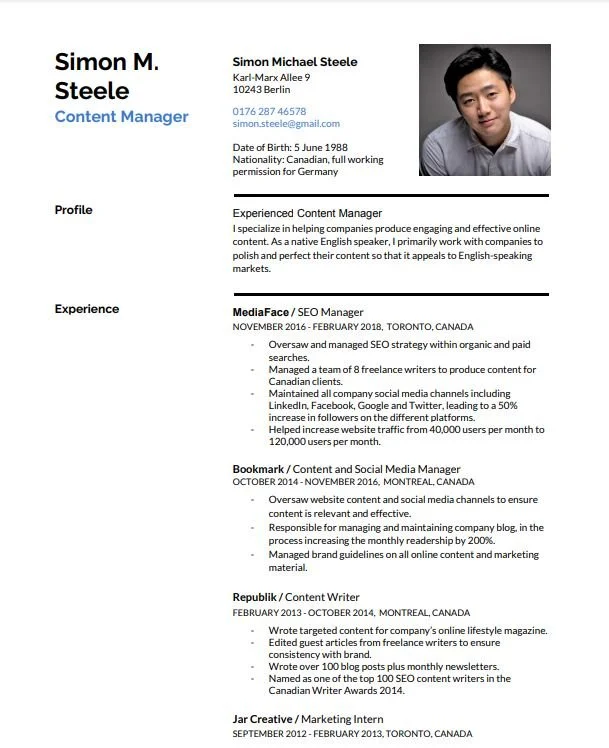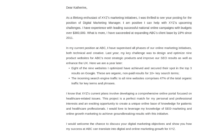Navigating the job market in Germany, or even applying for a German company’s international roles, often requires a different approach to your application documents. Unlike the often concise and achievement-focused CVs common in the UK or North America, a German CV, or Lebenslauf, emphasizes thoroughness and a specific structural format. Understanding these nuances is crucial for making a strong first impression and showcasing your professionalism.
If you’re an international candidate, or simply looking to adapt your existing resume for a German-speaking environment, you’ll find that having a well-structured german style cv template in english can be a game-changer. It ensures you meet the expectations of German recruiters while still communicating effectively in a language they understand, bridging cultural differences in job applications.
Key Elements of a German Style CV
A German CV is far more detailed and structured than its Anglo-Saxon counterparts. It’s typically reverse chronological but includes specific categories that are often omitted elsewhere. One of the most striking differences is the inclusion of personal data like date of birth and marital status, alongside a professional photograph. While these might seem unusual or even discriminatory in some countries, they are standard practice and expected in Germany. The photo, in particular, should be high-quality, professional, and friendly, as it serves as a visual representation of your personal brand.
Another defining characteristic is the comprehensive nature of each section. While bullet points are used, they are generally less about quantifying achievements (though still important) and more about detailing responsibilities and providing a complete overview of your professional journey. Every educational step, every work experience, and every relevant skill needs to be clearly laid out. The aim is to present a full, transparent picture of your life and career progression, allowing the recruiter to easily trace your path.
Essential Sections to Include
- Personal Data: Full name, address, contact details, date of birth, place of birth, nationality, marital status (optional but common), professional photo.
- Professional Experience: Listed in reverse chronological order, with clear dates, company names, job titles, and detailed descriptions of responsibilities and key tasks.
- Education: Again, reverse chronological, detailing degrees, institutions, and dates. Include thesis titles or key projects if relevant.
- Skills: Language proficiency (with levels), IT skills, and any other relevant professional skills.
- Further Training/Certificates: Any professional development courses or certifications.
- Interests/Hobbies (Optional): Can be included if they reflect positive traits like teamwork or dedication, but keep them brief and professional.
- Place, Date, and Signature: A handwritten or digital signature is expected at the very end to authenticate the document.
Unlike some CVs that focus solely on the most recent and relevant experience, a German CV often goes further back in time, providing a more complete life story. This isn’t about padding, but about providing context and demonstrating a consistent, structured career path. Accuracy and honesty are paramount, as discrepancies can be a major red flag for German recruiters.

Adapting Your CV for English-Speaking German Recruiters
While the structural elements of a German CV remain consistent, presenting your german style cv template in english requires careful consideration of language and cultural nuances. The goal is to maintain the expected German thoroughness while ensuring clarity and professionalism for an English-speaking audience. Avoid direct, literal translations of German terms or phrases, as they might not convey the intended meaning or sound awkward in English. Focus on using clear, concise, and professional English terminology that resonates with international business standards.
When describing your work experience and achievements, think about the balance between detail and impact. While German CVs are comprehensive, an English version should still highlight your accomplishments, using action verbs and, where possible, quantifiable results. This demonstrates your impact in previous roles, a valuable trait for any employer. Remember that while the structure is German, the language should be fluent and natural for an English-speaker, showcasing your communication skills.
Formatting also plays a significant role. Even in English, a German style CV typically features a clean, organized layout with clear headings and ample white space, making it easy to read. Consistency in font, size, and spacing across all sections is crucial for a polished appearance. A well-designed template helps ensure that your document is not only informative but also visually appealing and professional, reflecting attention to detail.
Finally, always proofread your English-language German CV meticulously. Errors in grammar, spelling, or punctuation can detract from your professional image. If possible, have a native English speaker review it for flow and accuracy, especially if English is not your first language. This final check ensures that your application is flawless and represents you in the best possible light to potential employers.
Mastering the intricacies of a German style CV, especially when translated into English, can significantly boost your chances in the competitive job market. It demonstrates your adaptability, attention to detail, and respect for cultural hiring practices, all highly valued traits in Germany. By presenting your qualifications in a clear, comprehensive, and professionally formatted document, you can confidently showcase your fit for any role.
Taking the time to craft such a detailed and well-presented document reflects positively on your commitment and work ethic. It signals to potential employers that you are not only qualified for the position but also serious about your application and capable of understanding and meeting specific professional standards. This meticulous approach often sets successful candidates apart.
